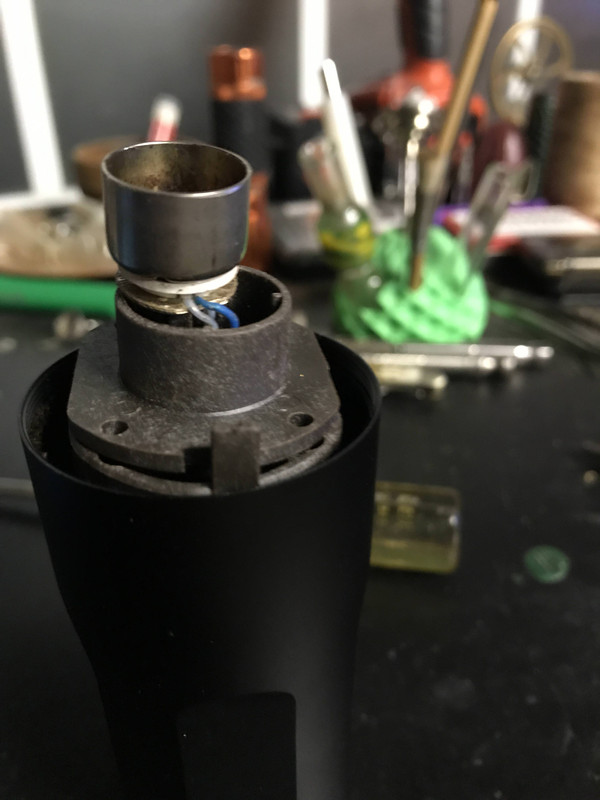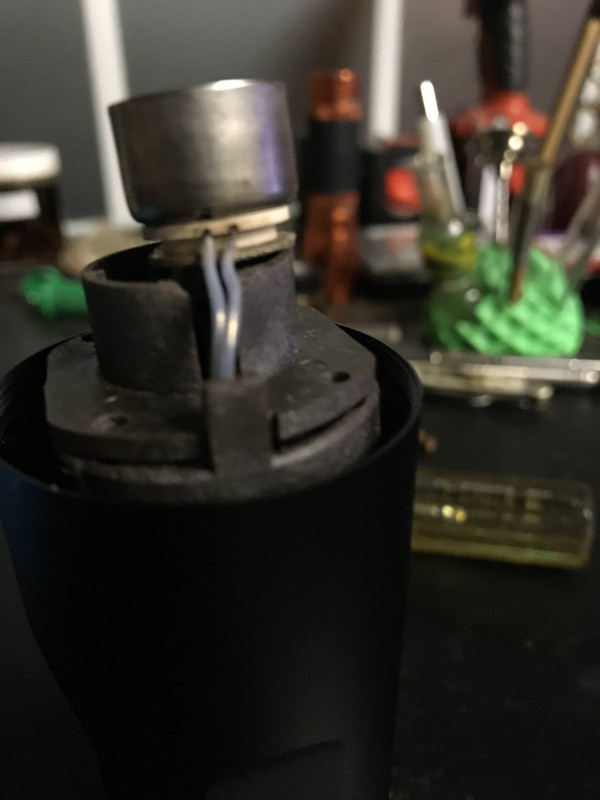Where'd that figure come from?
In the context of the overall conversation, the goal is to create air temps higher than the load, not the cup. I don't want to get lost in the details and forget that. We can argue the finer points of what's going on in this heater, but I don't want to lose sight of the perspective that forms the basis of it...what's happening in the load. The glass barrier allows the load to get heated, but keeps the load cooler than the rest of the system. Then air is heated hotter than the load as it passes through the system and brings the load temp to vaping temps.
Somehow u are opening a lot of different big books at once...
There are a few different (engineering) tools to describe/work with such systems, but it requires a lot of understanding of the math and physic basics for it - guess that is one reason why most engineer talk sounds so dickish to normal people...
More generally speaking those temp measurement charts are the response of a temperature controlled system. There are many more parts like buffers, isolation etc than the conduction/convection heat source in every system, that will affect its reaction.
The 'simplest' view (at least for system theoretics) of a temperature controlled system would be a chain beginning with the heater power consumption, then the 'pathway' (here we simplify and only write one 'black box' at the beginning, later it is splitted up like the heat transfer into different paths with various 'components') and at the end of the cain is the bowl temp. Then there is the temp measurement signal feedback to the controller who then adjusts the heater power and closes the loop. That is to keep it in stable condition, now we add a 'distortion function' which represents the drawing out of energy of the system. Here draw resistance comes in handy to limit energy flow and the 'bandwith' of that distorition function, which makes adjusting the controller values to that a lot easier... (I might be using wrong specific vocabulary but i'm not a native speaker...)
So a simple drawing of a heater/airpath is better to determine how conductive/convective the main heat transfer is, in this system the mayority of heat is dissipated by the best conductor who also has the most surface contact to the donuts (pressure hold by screw) - the bottom of the cooking pot eh cup

Compare it to the fury heater, air passes around the bottom, side and top of the disc heater, which only conducts via the parts that hold it in place and that is still plenty with not much surface...
For measuring what's going on inside the load, so far we've come up with a probe in the load and one outside the glass stem but in the cup, so it's mashed between the glass stem and stainless steel cup. That's been the placement for all of my 'real world' usage charts for Arizer portables and I believe it's where
@Stu is placing his in those types of tests as well. Would you change anything for placement and interpretation in that test, as well as Stu's bowl temp test?
btw, do you have any Arizer portables and a meter you could use? I would still like more confirmation of these tests we're running...
That's another thing, there are whole bachelor/master theses about setting up test stands without even doing one measurement...
By principle every measurement will change the system, so the cat is always gonna bite it's tail.
There are many different temp sensors for various ranges, i only got a bit experience with platin resistances - main advantage is relative easy calibration and easy elimination of measure errors induced by the wires... Measurement errors - another large chapter
A thin film probe between cup and donuts and some thermal paste to even the surface out might be interresting as would be the power consumption.
@Stu thanks for clarifying the cables, misread that somehow.
The last chart shows some more of the 'heater modulation' action in the lower curve...
Still got an old solo laying around, but it's not worth buying equipment for a few measurements to me already got too much stuff...
Now it's time for a double decker - a filled arizer stem hold onto a filled plenty reducer

(only long stems, they get f'n hot that way)








 (only long stems, they get f'n hot that way)
(only long stems, they get f'n hot that way)





